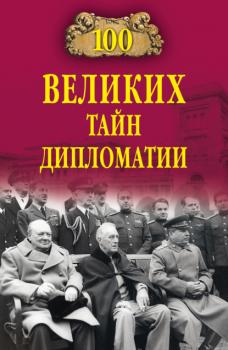MREADZ.COM - много разных книг на любой вкус
Скачивание или чтение онлайн электронных книг.«Барбаросса» по-японски. Почему провалился план «Кантокуэн»
В книге профессора-востоковеда на документальной основе показана политика милитаристской Японии в отношении Советского Союза накануне и в годы Второй мировой войны. Раскрытие стратегических и оперативных планов, комплекса мероприятий по подготовке к войне против СССР в 1931—1945 гг. дает возможность глубже понять характер агрессивных замыслов японского руководства, вскрыть причины провала так называемой стратегии «спелой хурмы», предусматривавшей вероломное нападение на нашу страну в случае ее поражения в войне против гитлеровской Германии, а также опровергнуть фальсифицированную версию о якобы «честном выполнении Японией японо-советского пакта о нейтралитете 1941 года». Рассматриваются переговорные перипетии навязанного японским правительством так называемого «курильского вопроса». Книга выпущена к 75-летию победы над милитаристской Японией и окончания Второй мировой войны.
100 великих деятелей тайных обществ
Существует мнение, что тайные общества правят миром, а история мира – это история противостояния тайных союзов и обществ. Все они существовали веками. Уже сам факт тайной их деятельности сообщал этим организациям ореол сверхъестественного и загадочного. В книге историка Бориса Соколова рассказывается о выдающихся деятелях тайных союзов и обществ мира, начиная от легендарного основателя ордена розенкрейцеров Христиана Розенкрейца и заканчивая масонами различных лож. Читателя ждет немало неожиданного, поскольку порой членами тайных обществ оказываются известные люди, принадлежность которых к той или иной организации трудно было бы представить: граф Сен-Жермен, Джеймс Андерсон, Иван Елагин, король Пруссии Фридрих Великий, Николай Новиков, русские полководцы Александр Суворов и Михаил Кутузов, Кондратий Рылеев, Джордж Вашингтон, Теодор Рузвельт, Гарри Трумэн и многие другие.
100 великих удивительных людей
Великие личности всегда вызывают к себе повышенный интерес. Это в основном люди с харизмой. В очередной книге серии в историко-хронологическом порядке представлены уникальные персоны, которые свои природные дарования проявили не только в войнах, науке, религии, искусстве. Обольстительная царица Древнего Египта Клеопатра любила власть и римских правителей и погубила себя в 29 лет, дав укусить змее; швейцарский целитель, алхимик Парацельс предсказал, что Московия, она же Гиперборея, превратится в процветающее государство; великий русский писатель Гоголь написал поэму «Мертвые души», герои которой… сгубили его душу. Книга об удивительных личностях будет интересна читателям, стремящимся понять необычные поступки знаменитых людей.
100 великих тайн дипломатии
Дипломатия – древняя наука международных отношений и искусство ведения переговоров представителей государств и правительств. В ней, как в любой государственной сфере, сталкиваются интересы различных политических и олигархических групп и объединений и нередко царит атмосфера закулисных интриг, авантюр и сложных геополитических противостояний, главными ставками которых являются вопросы существования государств и народов. О ста самых известных тайнах и загадках мировой дипломатии различных эпох рассказывает очередная книга серии.
Формула Бога. Эволюция религии, культуры и этики в эпоху технологической сингулярности и бессмертия
Эта книга – духовное путешествие автора и поиски ответов на вечные вопросы. В чем состоит природа божественного первоначала Вселенной? Есть ли у мироздания смысл и как смертному понять его? В чем предназначение человека? Перед вами итоги долгих поисков, вдохновленных духовными потребностями и интеллектуальной жаждой автора. «Формула Бога» – тот случай, когда сам путь к знанию, важнее точки назначения.
Классическая нумерология. Расшифровка квадрата Пифагора с комбинациями и дополнительными числами
Легко и просто нумеролог Анаэль и основательница одноименной школы познакомит вас с числами. С нуля вы научитесь работать с матрицей Пифагора, дополнительными, кармическими и магическими числами, нумерологией имени. Данные инструменты помогут вам лучше узнать себя и окружающих, найти свое предназначение и профессию, найти идеального партнера и построить гармоничные отношения в семье, понять своего ребенка и помочь ему раскрыть его сильные стороны. Помимо этого, числа подскажут, к каким болезням вы расположены и как их избежать, а также укажут на влияние года, чтобы вы знали, что от него ждать, и грамотно построили свои планы.
Привет, викинги! Неожиданное путешествие в мир, где отсутствует Wi-Fi, гель для душа и жизнь по расписанию
Элис Рэй – стоматолог, уставшая от жизни, немного от детей и мужа, который похож на ослика Иа-Иа. Ее жизнь под контролем, а эмоции спрятаны где-то глубоко внутри. Ее сестра Мелисса – полная ее противоположность, в жизни которой царит хаос и спонтанность. После досадного провала на рабочей конференции Элис понимает: ей нужно передохнуть. После недолгих уговоров сестры они уже в аэропорту, где выясняется, что Мелисса спланировала поездку не в спа-отель, чтобы расслабиться. Они едут в лагерь для… викингов. Походные условия, отсутствие связи и лекции о принципах жизни берсерков? Да ни за что, думает Элис, я могу просто все бросить и… Но не тут-то было, ведь приключение Элис только начинается. «Привет, викинги!» – остроумная дебютная новелла Хелен Расселл, автора нашумевшего бестселлера «Хюгге, или Уютное счастье по-датски».
Лекция «„Фауст“ Гете»
Рассмотрим произведение с точки зрения основы нового сюжета в литературе, в котором на первое место выходит человек, обладающий профессией. Мировая литература рассказывает всю жизнь не такое большое количество сюжетов. И почему в какой-то момент появляется психологический роман? Почему в какой-то момент появляется фантастическая история о превращении человека в животное и наоборот? Почему возникает фаустианская просветительская тема? «Смотрим на развитие того, что читатель предпочитает. Сегодня он предпочитает нон-фикшн, потому что ему не интересно про вымышленных героев. Это тоже интересная тенденция, об этом тоже стоит говорить. Мы будем заниматься превращениями жанров, потому что превращение идей это самое тупое, что тут может быть». Ваш учитель русского языка и литературы – Дмитрий Быков, писатель, поэт, школьный учитель в школах «Золотое сечение» и «Интеллектуал», экс-профессор МГИМО, приглашенный профессор Принстонского университета, постоянный лектор “Прямой речи”.
Ласточки в темноте
Полицейский Павел отправляется в Карелию по просьбе друга, чтобы помочь его родственнице с важным проектом. По дороге он узнает пугающую легенду: на один из местных островов наложен заговор – те, у кого черная душа, должны на нем погибнуть. Вскоре на острове находят первый труп. Теперь всем, кто оказался в этой поездке, придется погрузиться в темное прошлое и вынуть на свет тайны, которые порой оказываются страшнее легенд.
Монастырская кухня
Максим Сырников – это феномен русского мира. Человек, способный за граммами мяса в пирожке разглядеть историю, культуру и сам дух нации. Он один умеет готовить с таким вкусом и ароматом, что за этим ароматом слышишь все русские запахи разом: от пряного запаха ладана на тихой вечерней службе до простреливающей свежести зачинающейся русской весны. Так может только тот, кто беззаветно влюблён в Россию. И на эту его влюбленность зрители канал «СПАС» отвечают сердечной взаимностью. «Монастырская кухня с Максимом Сырниковым» – вот уже третий сезон – один из самых успешных проектов канала. Я иногда думаю: где он берет такой неслыханный багаж знаний о стране и ее кухне? Где он берет силы для ежедневного эфира и постоянных поездок по стране, где он руководит кухнями нескольких ресторанов? Может, на своей тихой тверской заимке? А, может, просто в искренней любви к делу своей жизни. Борис Корчевников, генеральный директор телеканала «СПАС» В формате PDF A4 сохранен издательский макет.









